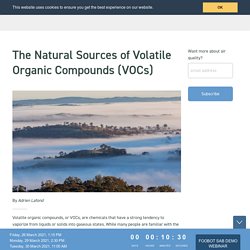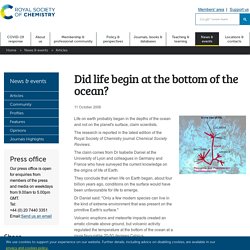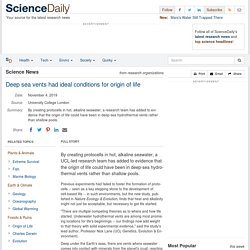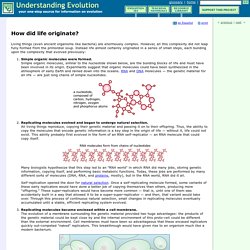

Compositions. Chemical Compositions of Extrasolar Rocky Material Because a white dwarf’s atmosphere is very clean (pure H or He), even a small amount of heavy elements will be easily detectable.

I have been using high-resolution spectrographs on Keck, the Very Large Telescope, and the Hubble Space Telescope to observe these heavily polluted white dwarfs and understand the composition of its accreting material. This is a summary of what we have found so far (from Xu et al. 2014, ApJ, 783, 79). To zeroth order, all the extrasolar rocky objects very much resemble bulk Earth with four dominating elements, O, Fe, Si and Mg. Sometimes, there are unexpected discoveries. Tidally Disrupted Asteroid around the White Dwarf G29-38 - NASA/ADS. TEMPERATURE STRUCTURE AND ATMOSPHERIC CIRCULATION OF DRY TIDALLY LOCKED ROCKY EXOPLANETS.
1.1.

Importance of Atmospheric Dynamics Terrestrial exoplanets orbiting M-dwarfs are extremely common. Results from the Kepler Space Telescope show that there are at least ~0.5 rocky planets per M-dwarf, half of which could even be habitable (Dressing & Charbonneau 2015). The Natural Sources of Volatile Organic Compounds (VOCs) Volatile organic compounds, or VOCs, are chemicals that have a strong tendency to vaporize from liquids or solids into gaseous states.

While many people are familiar with the anthropogenic forms of these often-unhealthy chemicals, they aren't only created by humans. What are the main sources of nitrogen oxides (NOx) and volatile organic compounds? It all depends on the specific substance in question: Nitrogen Compounds NOx are chemical compounds composed entirely of some combination of nitrogen and oxygen. Beyond the twilight zone. Human Life on Tidally Locked Planets Could Thrive. One possible scenario for a tidally locked planet is what’s known as the “eyeball Earth” model, in which a planet starts out entirely covered with ice—which then melts on the side facing the sun. To an observer from space, this could look like an eyeball, explains Angerhausen. Or, with an ocean that transports enough heat, you could end up with a lobster-shaped ocean surrounded by ice. In the most extreme scenarios, the heat on the light side becomes so extreme that water can’t exist. (19) Origins of Life: David Deamer Explains what Science Tells Us About the First Steps.
Did life begin at the bottom of the ocean? Life on earth probably began in the depths of the ocean and not on the planet's surface, claim scientists.

The research is reported in the latest edition of the Royal Society of Chemistry journal Chemical Society Reviews. The claim comes from Dr Isabelle Daniel at the University of Lyon and colleagues in Germany and France who have surveyed the current knowledge on the origins of life of Earth. They conclude that when life on Earth began, about four billion years ago, conditions on the surface would have been unfavourable for life to emerge. How the first life on Earth survived its biggest threat — water. On 18 February next year, a NASA spacecraft will plummet through the Martian atmosphere, fire its retro-rockets to break its fall and then lower a six-wheeled rover named Perseverance to the surface.

If all goes according to plan, the mission will land in Jezero Crater, a 45-kilometre-wide gash near the planet’s equator that might once have held a lake of liquid water. Among the throngs of earthlings cheering on Perseverance, John Sutherland will be paying particularly close attention. Sutherland, a biochemist at the MRC Laboratory of Molecular Biology in Cambridge, UK, was one of the scientists who lobbied NASA to visit Jezero Crater, because it fits his ideas about where life might have originated — on Mars and on Earth.
The choice of landing site reflects a shift in thinking about the chemical steps that transformed a few molecules into the first biological cells. Surface and Oceanic Habitability of Trappist-1 Planets under the Impact of Flares. 1.

Introduction The Trappist-1 system is a key future target in the search for life. First space mission dedicated to exoplanet atmospheres gets green light. The world’s first space telescope dedicated to studying the atmospheres of exoplanets is set to launch in 2028, after the European Space Agency (ESA) selected the mission for development on 20 March.

The Atmospheric Remote-sensing Infrared Exoplanet Large-survey (ARIEL) — to be built with a budget of €450 million (US$552 million) — will chart more than 1,000 known planetary systems outside our own. Its mission is to understand the links between a planet’s chemistry and its environment, says Giovanna Tinetti, a planetary scientist at University College London and principal investigator for the mission. So far, exoplanet probes have mainly focused on finding new planets and measuring their sizes, masses and orbits. “ARIEL can really give us a full picture of what exoplanets are made of, how they form and how they evolve,” says Tinetti. Model testing. Deep sea vents had ideal conditions for origin of life. By creating protocells in hot, alkaline seawater, a UCL-led research team has added to evidence that the origin of life could have been in deep-sea hydrothermal vents rather than shallow pools.

Previous experiments had failed to foster the formation of protocells -- seen as a key stepping stone to the development of cell-based life -- in such environments, but the new study, published in Nature Ecology & Evolution, finds that heat and alkalinity might not just be acceptable, but necessary to get life started. "There are multiple competing theories as to where and how life started. Underwater hydrothermal vents are among most promising locations for life's beginnings -- our findings now add weight to that theory with solid experimental evidence," said the study's lead author, Professor Nick Lane (UCL Genetics, Evolution & Environment).
Some of the world's oldest fossils, discovered by a UCL-led team, originated in such underwater vents. How did life originate? How did life originate?

Living things (even ancient organisms like bacteria) are enormously complex. However, all this complexity did not leap fully-formed from the primordial soup. Instead life almost certainly originated in a series of small steps, each building upon the complexity that evolved previously: Genomics reveals mechanism of heat resistance in bacteria. Warm-blooded creatures maintain a relatively stable body temperature that cannot tolerate the stress of intense heat (or cold).

When it's too hot proteins destabilize and degrade--in some cases, with fatal results. But some bacterial and archaeal organisms appear to defy nature (as we think of it) by flourishing in extremely high temperatures. The Survival Mechanisms of Thermophiles at High Temperatures: An Angle of Omics. What Are Chemosynthetic Bacteria? Unvrso has been writing varied topics of literature since 2005 and started writing for hubpages in 2009. Sulfur-Oxidizing Bacteria Chemosynthetic Bacteria Chemosynthetic bacteria are organisms that use inorganic molecules as a source of energy and convert them into organic substances.
Chemosynthetic bacteria, unlike plants, obtain their energy from the oxidation of inorganic molecules, rather than photosynthesis. Classification of Bacteria on the basis of Nutrition. Biology Educational Videos Last Updated on February 4, 2021 by Sagar Aryal Nutrition is substances used in biosynthesis and energy production and therefore are required for all living things.Bacteria, like all living cells, require energy and nutrients to build proteins and structural membranes and drive biochemical processes.Bacteria require sources of carbon, nitrogen, phosphorous, iron and a large number of other molecules. Carbon, nitrogen, and water are used in the highest quantities.The nutritional requirements for bacteria can be grouped according to the carbon source and the energy source.Some types of bacteria must consume pre-formed organic molecules to obtain energy, while other bacteria can generate their own energy from inorganic sources.
Nutritional Types of Bacteria. Photosynthetic efficiency. The photosynthetic efficiency is the fraction of light energy converted into chemical energy during photosynthesis in green plants and algae. Photosynthesis can be described by the simplified chemical reaction 6 H2O + 6 CO2 + energy → C6H12O6 + 6 O2 where C6H12O6 is glucose (which is subsequently transformed into other sugars, cellulose, lignin, and so forth). Animals at hydrothermal vents provide a new perspective on life.
There are many white crabs around vents as well as miniature lobsters. Eyeless shrimp that can sense heat with specialized regions of their head also live there. Dozens of amphipod species flourish around hydrothermal vents, including one common type with a clear body. A multitude of mollusks live at hydrothermal vents, such as three-foot long white octopuses, barnacles, copepods, mussels, snails and limpets. White or semi-transparent shells are commonplace among vent animals, including in a clam that grows to over a foot.
Worms are one of the most abundant types of animals. Is Solid Land Necessary for Biology? Hydrothermal Vent - an overview. Plankton. Chemosynthesis - Definition, Equation & Quiz. Snow Characteristics. Chemosynthesis. Smithsonian Ocean. Coevolution - an overview. Four Central Points About Coevolution. Habitat and Adaptation. These 7 animals have crazy adaptations to help them to survive in their habitats. How do species adapt to their environment? + Example. What do aliens look like? Do they eat? An astrobiologist tells us. What Would Life on Other Planets Look Like?